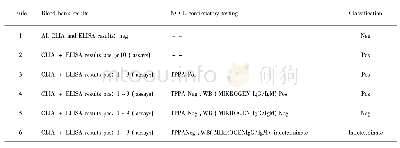《Table 1 Donor screening criteria[15,90]》
![《Table 1 Donor screening criteria[15,90]》](http://bookimg.mtoou.info/tubiao/gif/ZXXY202008001_33000.gif) 提示:宽带有限、当前游客访问压缩模式
提示:宽带有限、当前游客访问压缩模式
本系列图表出处文件名:随高清版一同展现
《"Therapies to modulate gut microbiota:Past,present and future"》
Careful screening and selection of the donor is a crucial step in FMT.However,the current evidence-based guidelines are not well established and raise uncertainty in terms of:whether the donor should be related to recipient vs household contact vs standard donor,frequency of screening of donors,and criteria for standard screening[41].A systematic review showed a higher rate of resolution of CDI in FMT done with related donors(93.3%of studies)than with unrelated donors(84%of studies)[42],while another study conducted to assess donor type found no difference in clinical outcome when the donor was patient-selected versus anonymous[22].In order to decrease the risk of transmitting the disease from donor to the recipient,and the risk of adverse events from the stool transfer,donor screening protocols have outlined exclusion criteria and testing for the donors(Table 1).A complete medical and social history is completed,including active infection,significant gastrointestinal(GI)illnesses(IBD,IBS,chronic diarrhea/constipation),history of autoimmune illnesses,allergy history,recent antibiotic use and hospitalization,recent travel,obesity,metabolic syndrome,anxiety,depression as well as detailed social risk assessment.This is done to identify any risk factors associated with conditions which have a disrupted microbiome.Subsequently,stool and blood testing for bacteria,viruses and parasites is done among the potential donors[43].With the rapidly growing significance of FMT as a therapeutic method,it would be beneficial to standardize the protocols for donor selection,recruitment and screening in the long run.
| 图表编号 | XD00128748400 严禁用于非法目的 |
|---|---|
| 绘制时间 | 2020.02.28 |
| 作者 | Akshita Gupta、Srishti Saha、Sahil Khanna |
| 绘制单位 | Department of Medicine,All India Institute of Medical Sciences、Division of Gastroenterology and Hepatology,Mayo Clinic、Division of Gastroenterology and Hepatology,Mayo Clinic |
| 更多格式 | 高清、无水印(增值服务) |





